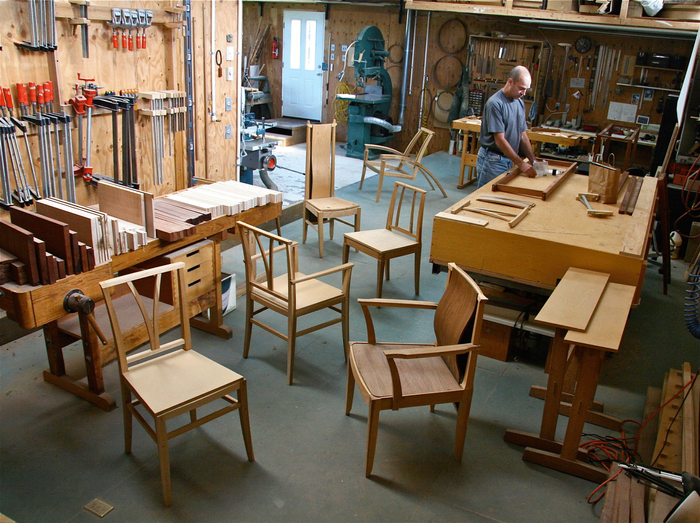Building a Community of Benches
Take a look at measured drawings of four benches from historic utopian communities.

Synopsis: Take a closer look at four of the utopian benches Francis Cape re-created after traveling to 12 Utopian communities and writing a book about the benches he found there.
Francis Cape’s travels in search of utopian benches took him to communities from Maine to Iowa. At each stop, he drew on the woodworking skills he developed as an apprentice in England, where he learned to measure and reproduce carved details in architecture and furniture. His new book about the bench project, We Sit Together: Utopian Benches from the Shakers to the Separatists of Zoar, contains descriptions of 12 communities and measured drawings of 18 benches.
Amana Church Bench
The original of this bench was one of hundreds of benches Cape found at the Community of True Inspiration in Amana, Iowa. The Amana society, which lasted from 1855 to 1932, had been led to America from Germany by a cabinetmaker, Christian Metz. Although Amana didn’t originally make furniture for sale, each of the seven villages comprising the community had its own sawmill and cabinet shop. This style of bench, though usually with a back, was made repeatedly over the life of the community.
Hancock Shaker Village Bench
This bench is based on an original at the Hancock Shaker Village near Pittsfield, Mass., which was active from 1783 to 1969 and is now a museum. After building it from plans in John Shea’s book The American Shakers and their Furniture, Cape was inspired to travel to a range of utopian communities and make his own measured drawings of the benches he found there. “True craft,” Cape says, “is humble, egalitarian, and anonymous.” The original of this bench is all of that, and simply and soundly built as well. Its cyma-curve brackets are joined to the legs with half-laps and screwed to the seat.
Zoar Number One House Bench
Built by the Society of Separatists of Zoar, a 19th-century religious community in eastern Ohio, the original of this bench expresses “the mix of austerity and joy in the Separatists’ lives,” Cape writes. Having fled religious persecution in Germany, some 300 Separatists established their community in 1817.
For the full article, download the PDF below.
Fine Woodworking Recommended Products

Circle Guide

Compass

Stanley Powerlock 16-ft. tape measure








Log in or create an account to post a comment.
Sign up Log in